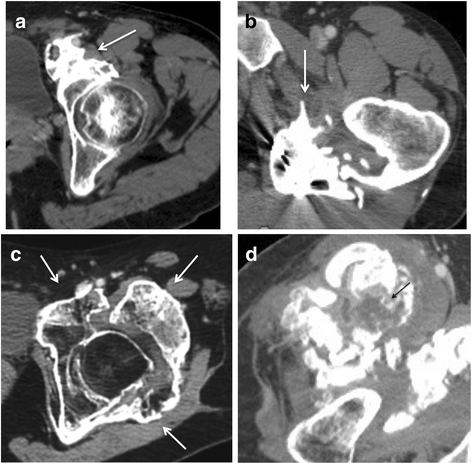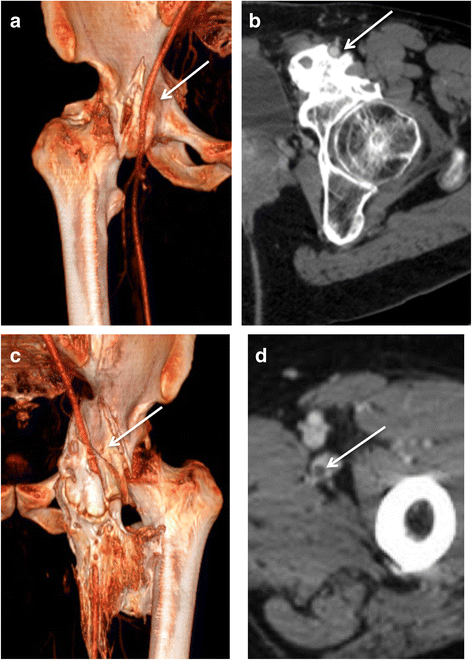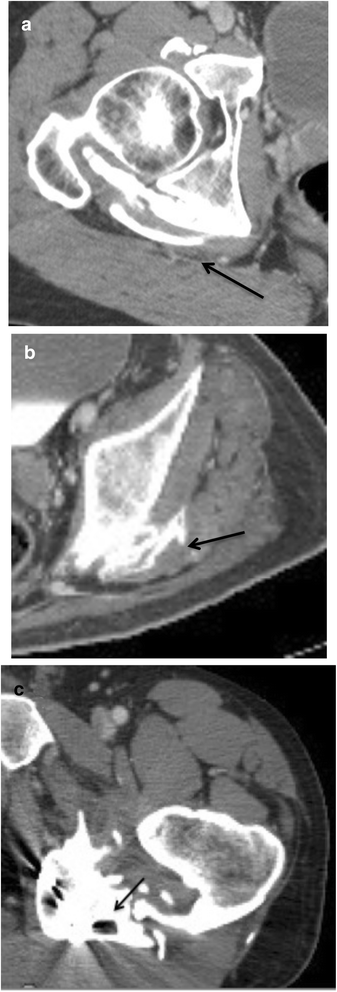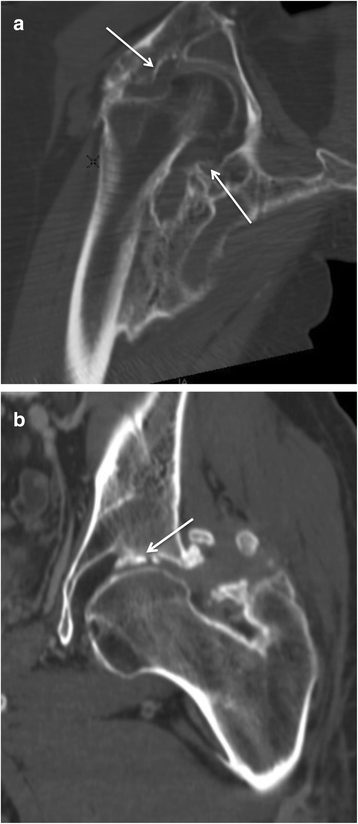Pre-surgical CT-assessment of neurogenic myositis ossificans of the hip and risk factors of recurrence: a series of 101 consecutive patients
- PMID: 27756329
- PMCID: PMC5070170
- DOI: 10.1186/s12891-016-1294-2
Pre-surgical CT-assessment of neurogenic myositis ossificans of the hip and risk factors of recurrence: a series of 101 consecutive patients
Abstract
Background: Neurogenic Myositis Ossificans (NMO) is a rare disabling pathology characterized by peri-articular heterotopic ossifications following severe peripheral or central nervous system injuries. It results in ankylosis and vessels or nerves compressions. Our study aimed to describe the pre-operative findings of patients with NMO of the hip using biphasic computerized tomography (CT).
Methods: Between 2006 and 2012, we retrospectively analyzed 101 consecutive patients with hip NMO. We analyzed all CTs and surgical reports following a standardized grid depicting the osteoma and its relations with joint capsule, vessels and nerves and bone mineralization. We studied surgical complications and recurrence during follow-up. Chi2-test and Fischer's test were performed to compare qualitative values with respectively normal and non-normal distribution. Quantitative values were analyzed with a one factor analysis of variance (ANOVA) test. Agreement between pre-surgical CT and surgical observations was evaluated with Cohen's kappa test.
Results: Correlation between pre-operative CT and surgical findings was excellent regarding relationships with vessels (0,82) and was good concerning relationships with sciatic nerves (0.62) and with joint capsule (0.68). Close contact or disruption of joint capsule (p = 0.005), joint space narrowing (p = 0.007) and bone demineralization (p < 0.001) were correlated with NMO recurrence.
Conclusions: Biphasic enhanced-CT allows pre-operative assessment of NMO with good correlation to surgical observations and helps prevent surgical complications.
Keywords: Brain trauma; Neurogenic myositis ossificans; Osteoma; Paraplegia; Spinal cord injury.
Figures





References
-
- Singer BR. Heterotopic ossification. Br J Hosp Med. 1993;49:247–51. - PubMed
MeSH terms
LinkOut - more resources
Full Text Sources
Other Literature Sources
Research Materials

